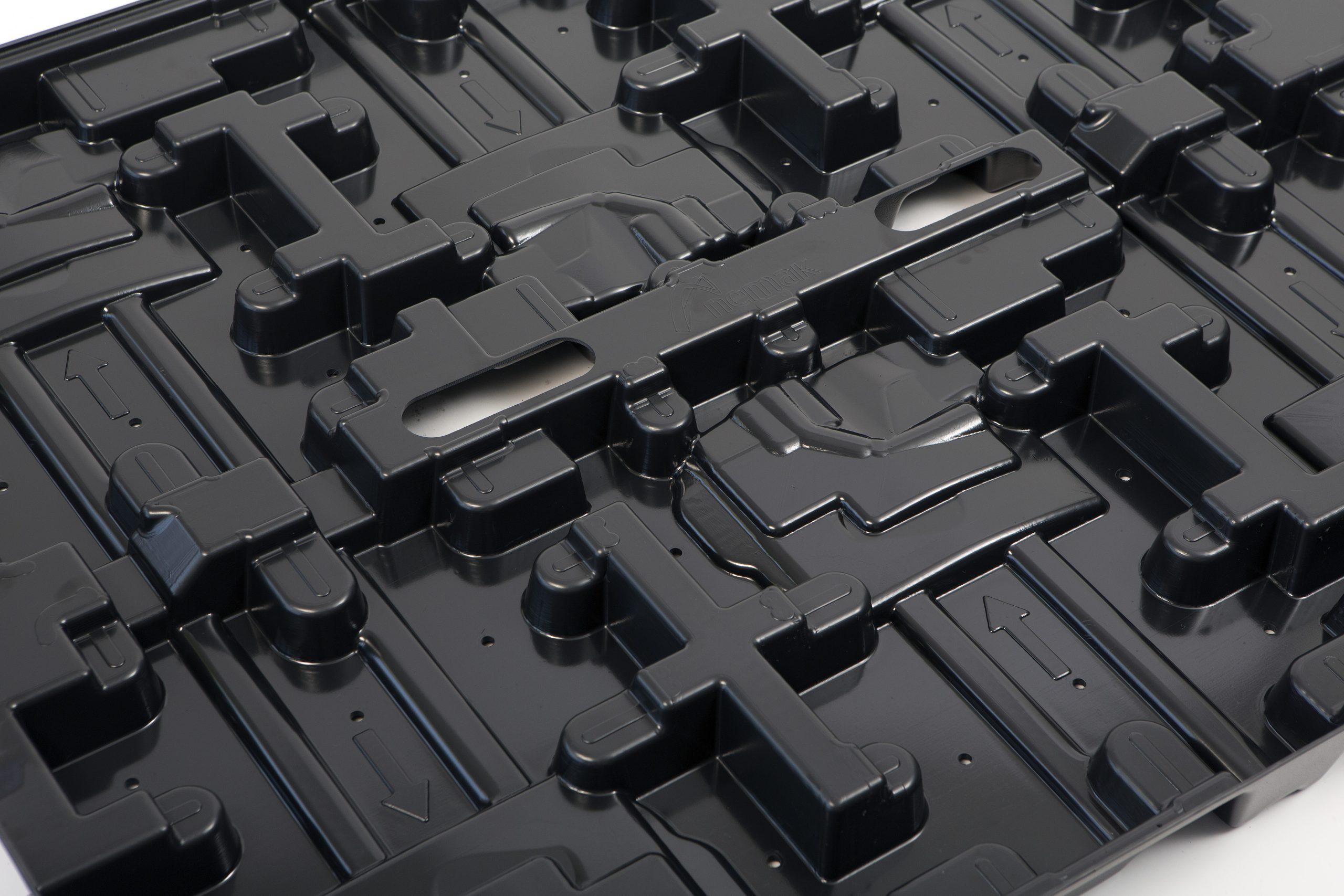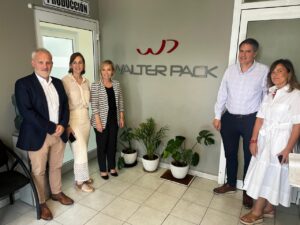One of the most versatile modeling techniques is thermoforming, thanks to which it is possible to manufacture countless products, including packaging. This process consists of different phases and offers great advantages, the most important of which is that this method can be adapted to the needs of customers. In the following, we will explain what thermoforming is, what it is used for, the benefits of this technique and much more interesting information about this method.
What is thermoforming?
Thermoforming is a process in which a PET or PVC plastic sheet is heated using a radiator and then molded. Once the sheet is hot, it is placed on top of a mold that can be made of different materials such as aluminum, wood or plastic, until the desired shape is obtained. Subsequently, it undergoes a die-cutting process to separate the different containers or products.
What types of thermoforming exist?
Vacuum thermoforming
Heat and pressure are used to shape the plastic sheets. When the material enters the mold, a vacuum is used to generate a vacuum, producing high pressure so that the plastic can be molded.
Pressure thermoforming
It is similar to vacuum thermoforming. The only difference is that a piston helps to create higher pressure, due to which it is possible to make products with more precise characteristics and in the shortest possible time.
Thermoforming by blow molding
In this technique, no molds are needed to shape the hot plastic. Compressed air is used between a chamber and the sheet to obtain a bubble that is cooled until the part is rigid and the final product is obtained.
Mechanical thermoforming
Direct mechanical force is used in order to give the preheated plastic sheet the desired shape. The core pushes the material until the die shape is achieved. It is mostly used when a high level of precision and detail is required on the part.
Thermoforming by distension
Hot plastic foil covers the mandrel with specific patterns that are etched into the plastic. It is one of the most affordable techniques, as it does not require much material. The thickness is maintained and there are no weaknesses in the parts.
Thermoforming by stamping with mold and counter-mold
This process is used to make high precision objects. A male and female mold is used to shape the heated sheet. For stamping, a machine is used that applies force to compress the material, which acquires the pattern that has been designed between the molds.
Thermoforming of twin sheets
Two layers are molded and combined into a single object. This is the best procedure for creating hollow and double-walled products.
What is thermoforming used for?
The main application of plastics thermoforming is for the manufacture of packaging used in different fields of industry, for example, blister packs for medicines or food trays. However, it is also well known in the automotive sector, since it is possible to manufacture plastic parts for cars with this technique, as well as being used in the household appliance industry to produce household items.
It is also used to manufacture prototypes, making a minimum investment and the best thing is that you can get a true copy of the model. Thanks to this, it is possible to work and make modifications, without the need to spend large amounts of money in the elaboration of molds.
What type of material is used for thermoforming?
With thermoforming it is possible to use different types of materials, mainly those called thermoplastics. They are so called because their flexibility increases at high temperatures, but when they cool down they harden, still retaining some of their elasticity. They include PET, PETG, PS, HDPE, ABS and PVC.
In some cases, other materials are added to achieve different finishes, such as aluminum in the case of blister packs. Biodegradable materials such as PLA are also added, although the process is more difficult with them. This is because they do not have the same properties as thermoplastics, so their cost can be up to ten times higher than the plastic version.
What are the advantages of thermoforming?
This technique offers many advantages, the most important of which are:
- The cost of the machinery and technology is lower.
- It is much more suitable for manufacturing high volumes of parts.
- Products made by thermoforming are lighter and thinner than those produced by injection molding.
- The process is much faster, so parts can be produced in a short time.
- The procedure for making thermoforming molds is less rigorous, so the cost is much lower.
- It is possible to make changes without altering the precision.
- Several products can be produced using a single mold.
- This technique is suitable for the manufacture of prototypes.
Thermoforming is part of the services we offer at Walter Pack, where we use high and low pressure automatic lines to modify materials such as ABS, PC, PA, among others.




